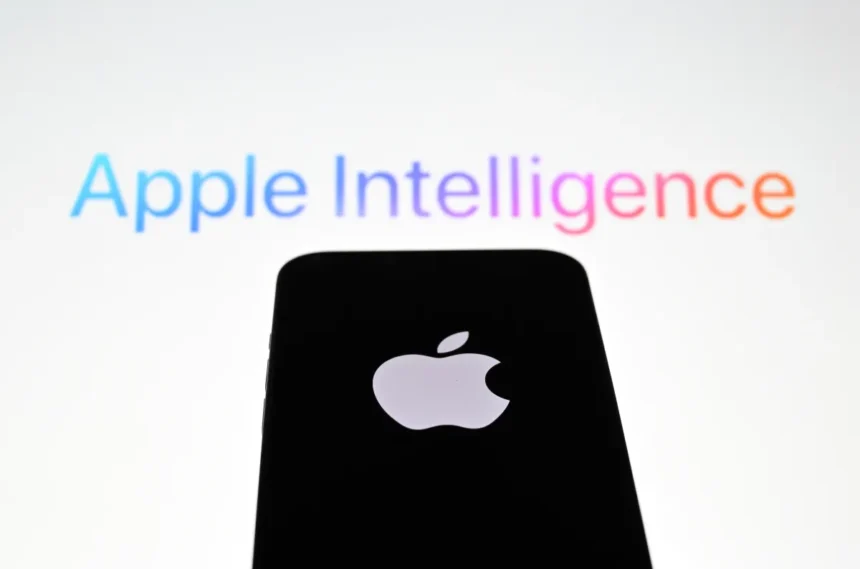In a move to enhance transparency and reduce confusion, Apple has announced that it will soon release a software update explicitly labeling its notification summaries as being powered by artificial intelligence (AI). This change aims to address growing concerns over the accuracy and clarity of these summaries, as well as the potential for misinformation.
The Announcement
On Monday, Apple disclosed its plans to roll out this update in the coming weeks. The update will include additional clarification for users, making it evident when the text displayed in notification summaries has been generated by AI. An Apple spokesperson elaborated on this initiative in a statement:
“A software update in the coming weeks will further clarify when the text being displayed is summarization provided by Apple Intelligence. We encourage users to report a concern if they view an unexpected notification summary.”
The move reflects Apple’s commitment to fostering user trust and ensuring that its AI-driven tools are both useful and transparent. Users will also have an opportunity to report inaccuracies, allowing Apple to continuously refine its summarization algorithms.
AI Summaries: Convenience with Caveats
Apple’s notification summaries, powered by its proprietary Apple Intelligence, are designed to provide users with quick, digestible insights into their notifications. While the feature has undoubtedly been helpful for many, it has also drawn criticism for its occasional inaccuracy.
These errors range from amusing mishaps to problematic misrepresentations. For instance, just last month, the BBC lodged a complaint about a glaringly inaccurate summary. According to the BBC, Apple Intelligence had misrepresented a headline, summarizing it in a way that falsely suggested Luigi Mangione, a man charged with the murder of UnitedHealthCare CEO Brian Thompson, had taken his own life. This mistake highlights the potential risks of relying on automated summarization without proper context.
Sensitive Notifications Excluded
Apple has taken measures to prevent such issues in certain cases. In an interview with The Wall Street Journal last year, Craig Federighi, Apple’s Senior Vice President of Software Engineering, noted that Apple Intelligence is programmed to avoid summarizing notifications deemed sensitive. This safeguard is designed to minimize the risk of spreading misinformation or causing unnecessary alarm. However, as the recent BBC incident illustrates, the system is far from perfect.
The Bigger Picture: AI Labels in Tech
Apple’s decision to label AI-generated content is part of a broader industry trend aimed at improving transparency in the use of artificial intelligence. In recent years, several tech companies have faced backlash for failing to clearly disclose when AI tools were used.
Last year, Meta made headlines after photographers criticized its labeling system for AI-generated or edited images. The labels, initially intended to inform users about AI involvement, inadvertently implicated photographers who had not used any AI tools in their work. Meta responded by refining its labeling practices to better address these concerns.
Similarly, Google has implemented disclosures for images created using its AI tools, ensuring users are aware of the content’s origins. These efforts underline the tech industry’s ongoing struggle to balance innovation with transparency and accountability.
Why This Matters
The introduction of AI labeling for notification summaries is more than just a technical update—it reflects a shift in how companies approach AI transparency. As artificial intelligence becomes increasingly integrated into our daily lives, ensuring users understand when and how it is being used is essential for building trust.
For Apple users, this update could mean greater clarity and fewer instances of confusion caused by misinterpreted summaries. For Apple itself, it’s an opportunity to set a standard for responsible AI usage in the tech industry.
Looking Ahead
As Apple prepares to roll out this update, it’s clear that the company is listening to user feedback and taking steps to address concerns. While challenges remain in ensuring the accuracy of AI-generated content, initiatives like these signal a commitment to improving the user experience.
The forthcoming update is expected to be part of a broader effort by Apple to refine its AI tools and ensure they meet the high standards users have come to expect. In the meantime, users are encouraged to report any inaccuracies they encounter, helping Apple continue to evolve its AI-driven features.
With tech giants like Apple, Meta, and Google leading the charge, the era of clearly labeled AI-generated content is upon us. This shift not only empowers users with greater understanding but also sets a precedent for how AI should be implemented responsibly in the digital age.










